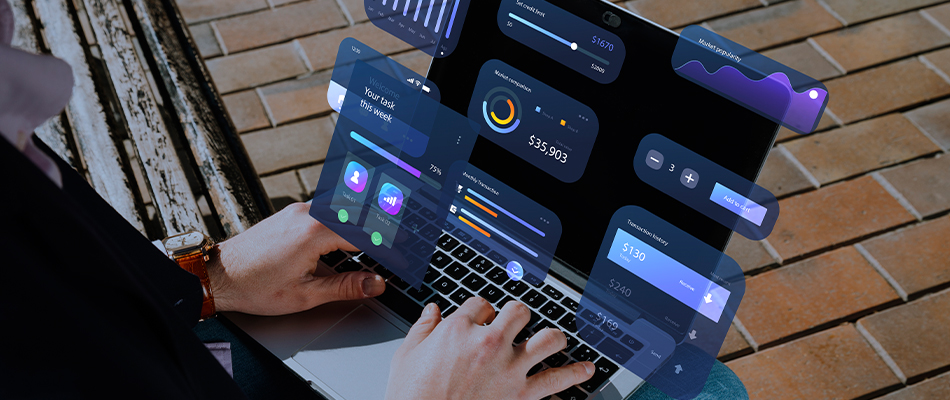In today’s data-driven world, the ability to understand and analyse data is becoming a foundational skill across industries. For beginners, entering the world of data analytics may feel overwhelming, but the right tools can make the journey easier and more rewarding. Whether you’re a student, an aspiring data analyst, or a professional seeking to upskill, using beginner-friendly analytics tools can help you gain confidence and insights from data quickly and efficiently.
Table of Contents
Why Beginners Should Learn and Use Data Analytics Tools
As data continues to drive decision-making across industries, the ability to work with analytical tools is becoming a valuable foundational skill. For beginners, these tools offer an approachable entry point, enabling them to analyse data, extract insights, and build analytical thinking without requiring extensive technical expertise. It helps in
- Simplify Complex Tasks: Beginner-friendly tools help simplify data collection, cleaning, visualisation, and analysis without needing advanced technical skills.
- No or Minimal Coding Required: Many tools (like Excel, Power BI, and Tableau) offer drag-and-drop features and intuitive interfaces, allowing you to focus on insights instead of programming.
- Hands-On Learning with Real Data: These tools enable users to engage directly with actual datasets, enhancing the learning experience through practical, real-world applications.
- Progressive Skill Development: Beginners can start with basic functions and progress to more advanced features as they grow comfortable.
- High Market Demand: Data analytics skills are highly sought after in today’s job market across all industries.
- Versatility Across Job Roles: The ability to interpret data is valuable not just for analysts but also for professionals in marketing, human resources, education, and more.
- Enhanced Critical Thinking: Working with data sharpens analytical thinking, problem-solving, and decision-making skills.

Best Data Analytics Tools for Beginners
Choosing the right data analytics tool can significantly ease the learning curve for beginners. Below is a list of widely recommended tools that are beginner-friendly, versatile, and commonly used across industries:
1. Microsoft Excel
Excel remains one of the most accessible and widely used tools for data management and analysis. It supports everything from data entry to statistical computations through its built-in functions, pivot tables, and charts.
Benefits:
- Easy to learn and widely available
- Ideal for basic data entry, organisation, and analysis
- Supports statistical functions and trend analysis
- No programming skills required
2. Google Sheets
Google Sheets is a cloud-based alternative to Excel that allows for seamless, real-time collaboration and integration with other Google tools.
Benefits:
- Web-based and accessible from any device
- Enables real-time collaboration
- Supports basic functions, filters, and charts
- Integrates easily with Google Data Studio for visual reports
3. Tableau
Tableau is a powerful data visualisation platform that transforms raw data into compelling, interactive dashboards. It helps users build interactive dashboards and explore data visually without writing code.
Benefits:
- User-friendly drag-and-drop interface
- No coding required
- Tableau Public offers a free version for beginners
- Promotes visual learning with instant feedback
4. Power BI
Microsoft Power BI is a business intelligence tool that integrates well with Excel and other Microsoft products, making it ideal for those already in the Microsoft ecosystem.
Benefits:
- Intuitive and user-friendly interface
- Offers automation features through Power Query
- Free desktop version available
5. Python (with Pandas)
Python is a versatile programming language, and with libraries like Pandas, NumPy, and Matplotlib, it becomes a powerful tool for data analysis and visualisation.
Benefits:
- Open-source and industry-recognised
- Supported by a large learning community
- Excellent for data cleaning, automation, and analysis
- Scalable from simple tasks to complex projects
6. R (with RStudio)
R is tailored for statistical computing and is widely used in academic and research environments. RStudio makes the experience more organised and manageable.
Benefits:
- RStudio provides a user-friendly development environment
- Extensive packages for statistical analysis and visualisation
- Free and open-source
- Highly favoured in academia and data science research
7. SQL (Structured Query Language)
SQL (Structured Query Language) is essential for anyone working with large datasets stored in relational databases. It’s also a critical skill in many analytics roles.
Benefits:
- Simple and readable syntax
- Helps retrieve and filter data efficiently
- Works alongside tools like Power BI and Tableau
8. RapidMiner
RapidMiner is a no-code platform designed for data science and machine learning, offering a visual workflow environment suited to non-programmers.
Benefits:
- Drag-and-drop interface
- Supports predictive analytics and modelling
- No coding required
- Free version available for educational use
Choosing the Right Tool
When selecting a data analytics tool as a beginner, consider your goals:
- Want to start with basics – Choose Excel or Google Sheets
- Interested in data storytelling – Try Tableau or Power BI
- Keen on coding – Learn Python or R
- Working with databases – Start with SQL
- Prefer no-code platforms – Use RapidMiner
Always start with one tool, build confidence, and gradually explore others as your skills grow.

Conclusion
Mastering data analytics starts with choosing the right tools – tools that match your current skill level, learning style, and career aspirations. For beginners, platforms like Excel, Google Sheets, Tableau, Power BI, Python, R, SQL, and RapidMiner offer a wide range of features that make data analysis accessible and engaging without overwhelming complexity.
By starting with beginner-friendly tools and progressing at your own pace, you can build a strong foundation in data analytics, enhance your critical thinking skills, and open up valuable opportunities across various industries. Whether you’re aiming to make data-driven decisions in your current role or pursuing a career in data science, these tools are the stepping stones to a future shaped by insight, evidence, and informed action.
Best Data Analytics Tools for Beginners – FAQs
Which data analytics tool is best for beginners?
Excel and Tableau are excellent for absolute beginners. Excel helps build foundational data skills, while Tableau enables interactive visualisations without coding.
Do I need to learn coding to start data analytics?
No, many tools like Excel, Power BI, and Tableau require no programming. However, learning Python or SQL later can significantly enhance your capabilities.
Is Python better than Excel for data analysis?
Python is more powerful for large datasets and automation, but Excel is easier for beginners and smaller tasks. They complement each other well.
Can I learn data analytics on my own?
Yes, with online courses, tutorials, and practice datasets, you can self-learn data analytics using tools like Google Sheets, Python, and Power BI.
How long does it take to learn data analytics tools?
You can learn the basics of tools like Excel or Tableau in a few weeks. Mastery depends on the complexity of the tool and your pace of learning.






